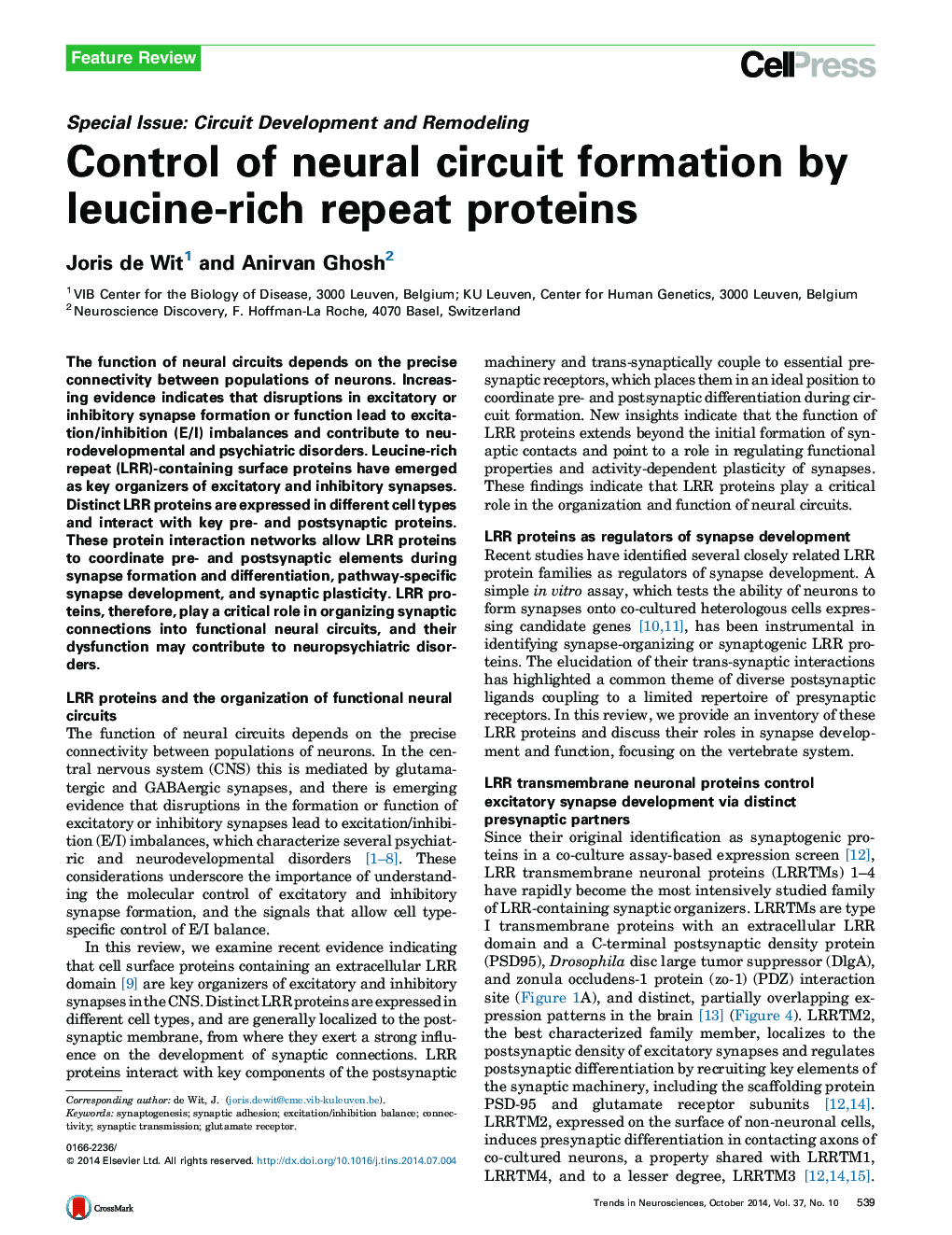| Article ID | Journal | Published Year | Pages | File Type |
|---|---|---|---|---|
| 4354171 | Trends in Neurosciences | 2014 | 12 Pages |
•Leucine-rich repeat (LRR) proteins regulate the development, function, and plasticity of excitatory and inhibitory synapses.•Postsynaptic LRR proteins interact with key presynaptic receptors to promote pre- and postsynaptic differentiation.•Distinct LRR proteins are expressed in different cell types in the central nervous system (CNS).•LRR protein dysfunction may disrupt the excitation/inhibition balance and contribute to neuropsychiatric disorders.
The function of neural circuits depends on the precise connectivity between populations of neurons. Increasing evidence indicates that disruptions in excitatory or inhibitory synapse formation or function lead to excitation/inhibition (E/I) imbalances and contribute to neurodevelopmental and psychiatric disorders. Leucine-rich repeat (LRR)-containing surface proteins have emerged as key organizers of excitatory and inhibitory synapses. Distinct LRR proteins are expressed in different cell types and interact with key pre- and postsynaptic proteins. These protein interaction networks allow LRR proteins to coordinate pre- and postsynaptic elements during synapse formation and differentiation, pathway-specific synapse development, and synaptic plasticity. LRR proteins, therefore, play a critical role in organizing synaptic connections into functional neural circuits, and their dysfunction may contribute to neuropsychiatric disorders.
